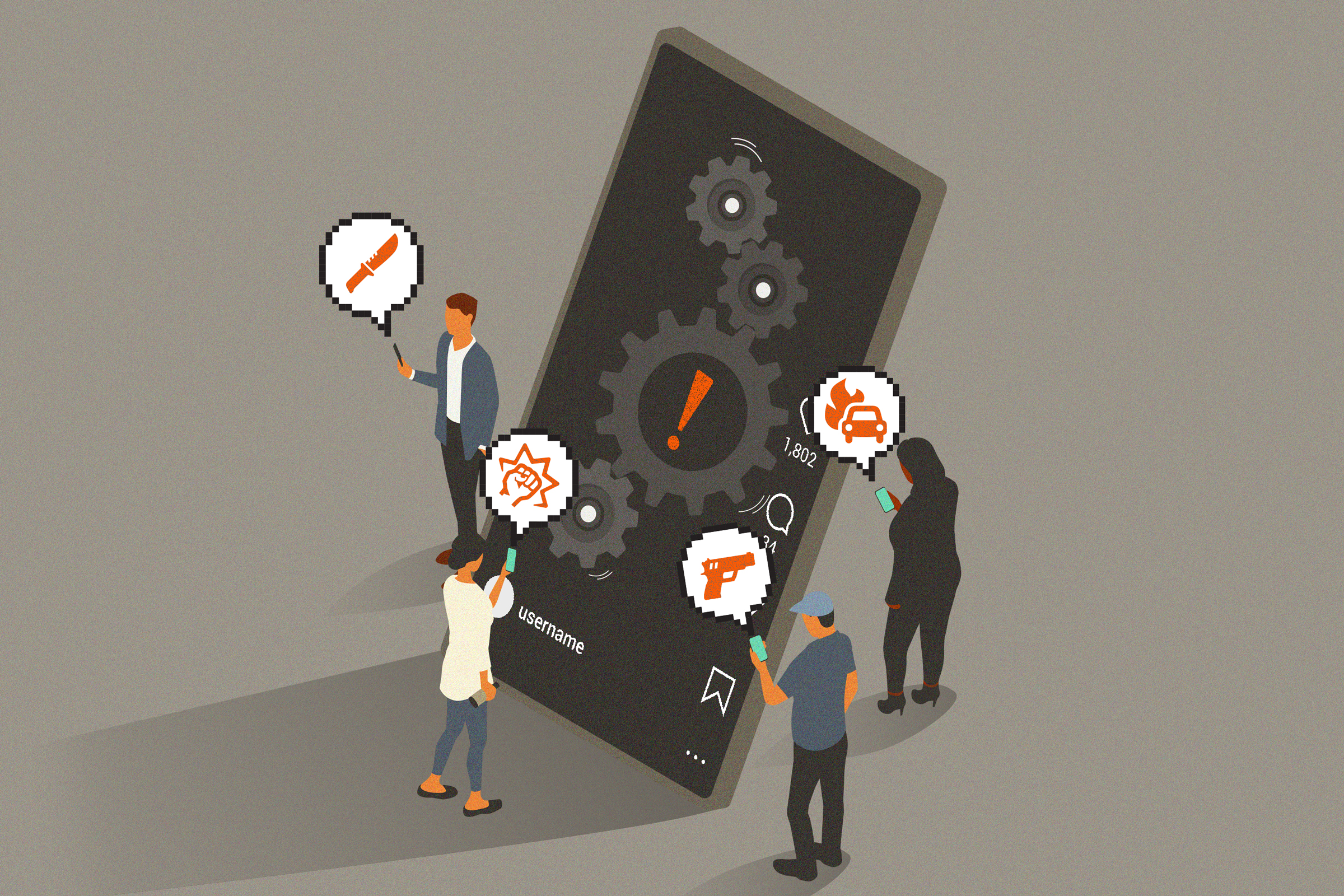Vitally important that you watch and listen to the directly related piece to this article found here:
When finished reading the article.
Thank you.
Ken Pullen, Monday, September 29th, 2025
How Social Media Is Warping People’s Relationship With Violence
Real violence served by social media for entertainment is desensitizing America’s youth, experts warn.
September 26, 2025
By Petr Svab
Reprinted from The Epoch Times
Easy access to an endless stream of violence, combined with encouragement of violence on social media, is distorting people’s attitudes toward it, an issue that is difficult to solve through automation, experts say.
Violence has always been a part of the human experience, but has never been available in such quantities for entertainment, the experts noted.
In contrast with fictional violence in movies and video games, social media provides anyone the ability to see real violence, with effectively no restrictions on age. Additionally, it’s often presented as entertainment, with flippant, crass, or cynical commentary, and mixed with other random content described in online parlance as “brain rot,” explained Jeffrey Blevins, professor of media and journalism at the University of Cincinnati and an expert on social media content.
At the same time, political divisions have led to large segments of society being cast as sub-human, leading to the suggestion they deserve violence, noted Andrew Selepak, an associate professor of media and communications at the University of Florida who specializes in social media research.
While most social media platforms restrict graphic or violent content, some slips past the filters, while other content that rides the edge of what platforms allow continues to make it through.
Some 70 percent of youth aged 13–17 see real-world violence on social media, according to a 2024 Youth Endowment Fund survey of teens in England and Wales. TikTok users reported the highest exposure at 44 percent of respondents in the preceding 12 months. X users followed with 43 percent, though less than a quarter of respondents reported using the platform. Facebook, Snapchat, and Instagram weren’t far behind, with exposure rates of 31–33 percent.
The recent assassination of conservative commentator Charlie Kirk was “sadly, an interesting case study,” Blevins said. The extremely graphic videos of the incident were seen by millions of people on social media despite platform restrictions.
Too Much
Research literature has talked for years about the issue of “desensitization” by repeated exposure to violence in digital media.
In real life, Americans overall have been fortunate enough to only sporadically experience violence on a personal level, Selepak said.
“We don’t experience violence every day, multiple times a day, in the real world; but on social media, especially because people are spending hours each day [on those platforms], you can be exposed to it for hours each day repeatedly,” he said.
“Outside of people engaged in war, there’s never been an equivalent to this in human history.”
Even those with the most real-life exposure to violence, such as first responders, often see only its aftermath, which leads them to appreciate its destructive consequences.
Online, on the other hand, a person can easily get pulled into watching a near-endless stream of real-world violence detached from its consequences, Selepak noted.
A major issue is the use of algorithms to personalize content for each user, the experts agreed. Once a person stumbles upon a few videos of a certain kind, the algorithm picks up on the apparent preference and supplies more. Even if the platform restricts graphic violence, there’s plenty of borderline content that makes it through, yet is still brutal—and it’s exactly the borderline content that often goes viral.
“Content that does anger us, that does upset us, that is upsetting content, we’ll spend more time consuming that, commenting on it, engaging with it, which leads to that content, based on the algorithm, then being more visible to more people, because it’s getting so much engagement,” Selepak said.
And restricting such content would hurt the platforms’ bottom line, he pointed out.
“The platforms make money by how much time we spend on there, seeing ads.”
Further complicating the issue is that violent content has real information value in some contexts.
Algorithms, however, lack the ability to make such distinctions because they lack human sensibility to begin with.
“Algorithms are really good with content, but certainly not context and ethics,” Blevins said. “They don’t necessarily come with that moral compass.”
Selepak concurred.
“The algorithm doesn’t necessarily care what we’re consuming. It just wants us to consume,” he said.
Conflict Magnifier
Social media doesn’t just expose people to violence; it also facilitates it.
In the UK survey, 16 percent of respondents admitted to engaging in violence in the preceding 12 months, with about two-thirds saying social media played a role, “including online arguments leading to in-person violence, comments exacerbating conflicts and children saying things online that they wouldn’t say face-to-face.”
A 2021 paper based on dozens of interviews with mostly black youth found that “small” and “petty” arguments on social media can easily turn into serious real-life conflicts and physical altercations.
“Adolescents often do not go online with the intention to fight. Rather, as they are acutely aware, social media is a unique environment that amplifies and changes experience of conflict,” it said.
Calls for Violence
Beyond visual gore, social media also provides a forum for violence advocacy. The experts refrained from singling out any particular political group, but highlighted the significant volume of such content, despite various platform restrictions.
“If you’re interested in a particular ideology or a particular group or a particular phenomenon, start a fresh account … feed in those keywords, and just watch what the algorithm feeds you,” Blevins said. “It could be eye-popping.”
With algorithms constantly recommending more similar content, people using those platforms can easily gain the impression that an extreme or fringe position is normal and commonplace, the experts warned.
There’s also a new phenomenon of “sycophantic” personal AI chatbots that affirm the user’s beliefs to an unhealthy degree, Blevins noted.
Then there’s content that doesn’t call for violence outright, but provides indirect justification for it.
A man holds a phone displaying the TikTok app.
“If you’re on Meta or YouTube, X as well as TikTok, there’s this constant drumbeat of one side is fascist and Nazis and what we would consider the absolute worst of the worst of humankind,” Selepak said.
“That kind of dehumanization, and the repeated presentation of that dehumanization, can make violence or accepting violence against that group much more possible.”
With a growing body of research showing the negative effects of social media, at least in its current form, public opinion toward it has been shifting as well.
But almost half of teenagers admitted in a Pew Research poll last year that they spend too much time on social media, up from only about a quarter saying so in 2023.
Also, Americans overall seem to be moving closer to the position that children shouldn’t have cell phones, not just during class, but during the entire school day. In 2024, 36 percent supported all-day bans, while earlier this year, support for all-day cell phone bans was at 44 percent, according to a Pew Research poll.
RELATED:
Link to Epoch Times article with charts and graphs, which were not reproducible:
How Social Media Is Warping People’s Relationship With Violence | The Epoch Times












Leave A Comment
You must be logged in to post a comment.